Abstract
1 Eight healthy subjects (six male, two female, aged 18-21 years) received graded intravenous bolus injections of isoprenaline sulphate. Heart rate and intra-arterial blood pressure were continuously monitored PRE- and POST-atropine (0.04 mg/kg). 2 PRE-atropine, an increase in heart rate of 25 beats/min was produced by 2.15 +/- 0.53 micrograms of isoprenaline and was associated with a fall in mean, systolic and diastolic pressures (18.9 +/- 2.8, 17.7 +/- 3.4 and 20.4 +/- 2.3 mm Hg respectively). 3 POST-atropine, the heart rate dose response curve was shifted to the right so that the dose of isoprenaline which increased heart rate 25 beats/min PRE-atropine, produced a significantly smaller heart rate rise of 20.3 +/- 1.7 beats/min (P less than 0.001). This was associated with a shift of the blood pressure dose-response curves to the left, and larger falls in mean, systolic and diastolic pressures (30.9 +/- 2.8, 31.8 +/- 3.3, 30.1 +/- 3.3 mm Hg respectively; P less than 0.01). 4 It is concluded that there is a significant contribution from a reflex withdrawal of cardiac vagal tone, to the tachycardia produced by a bolus of isoprenaline.
Full text
PDF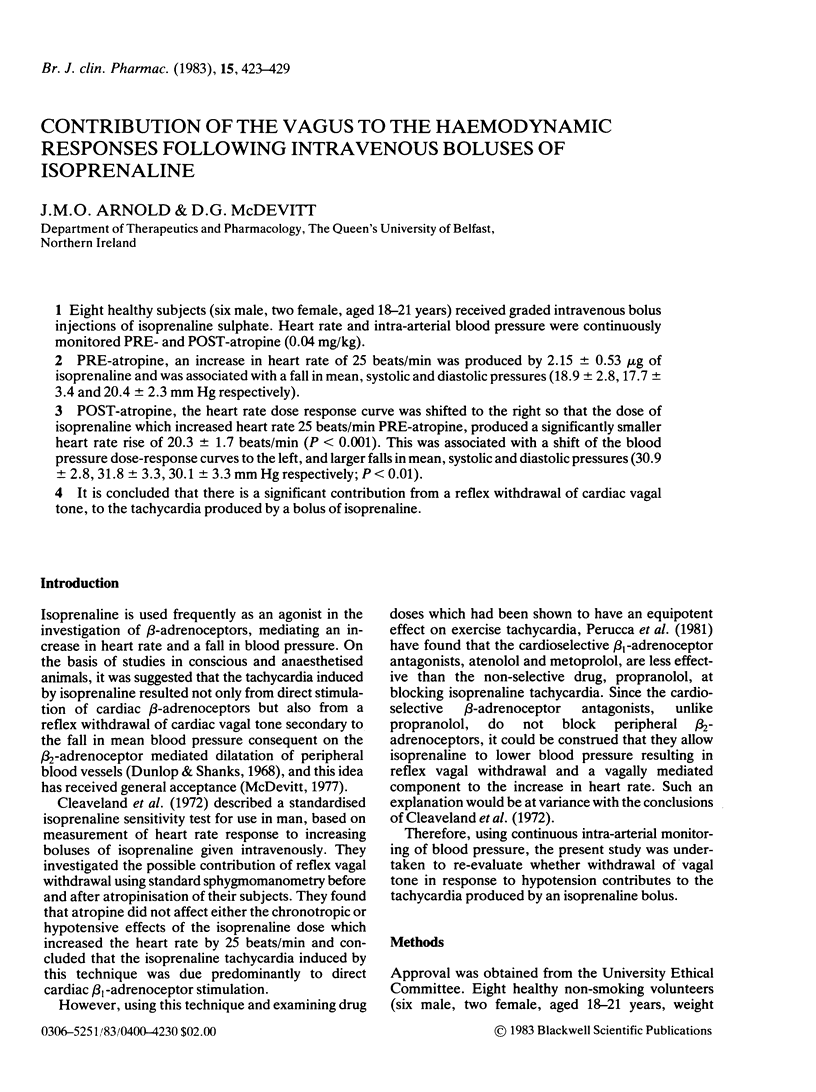
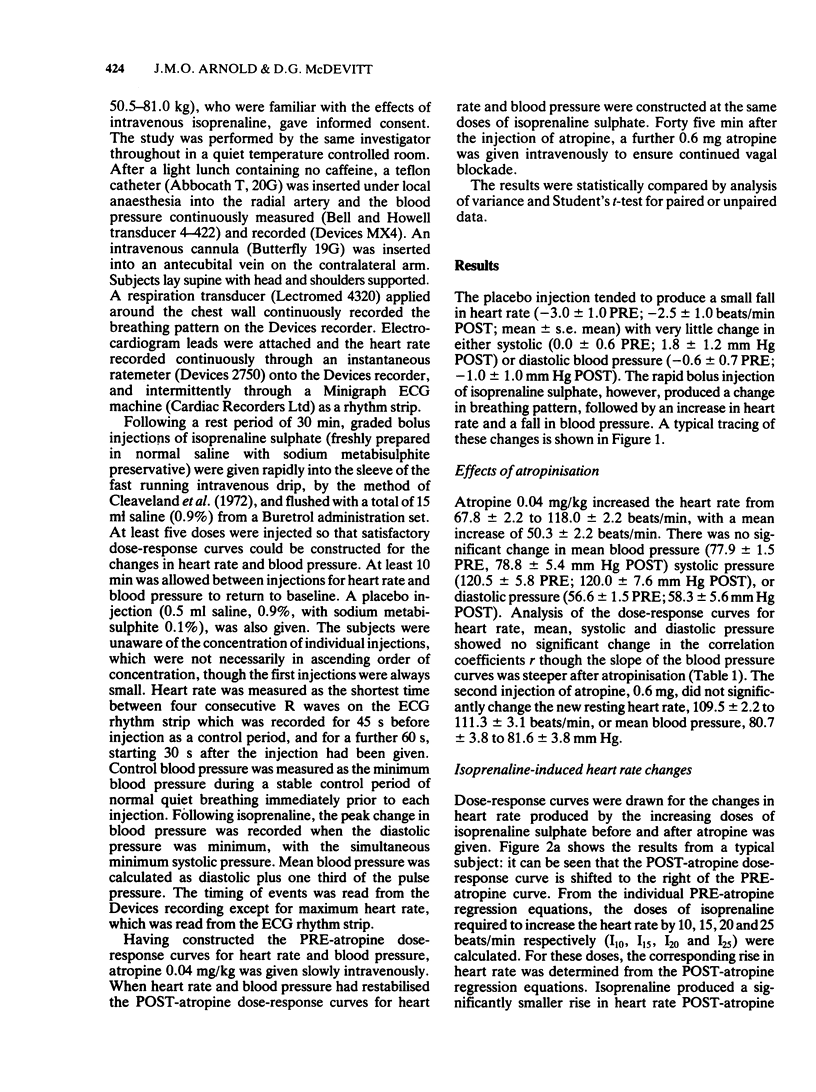
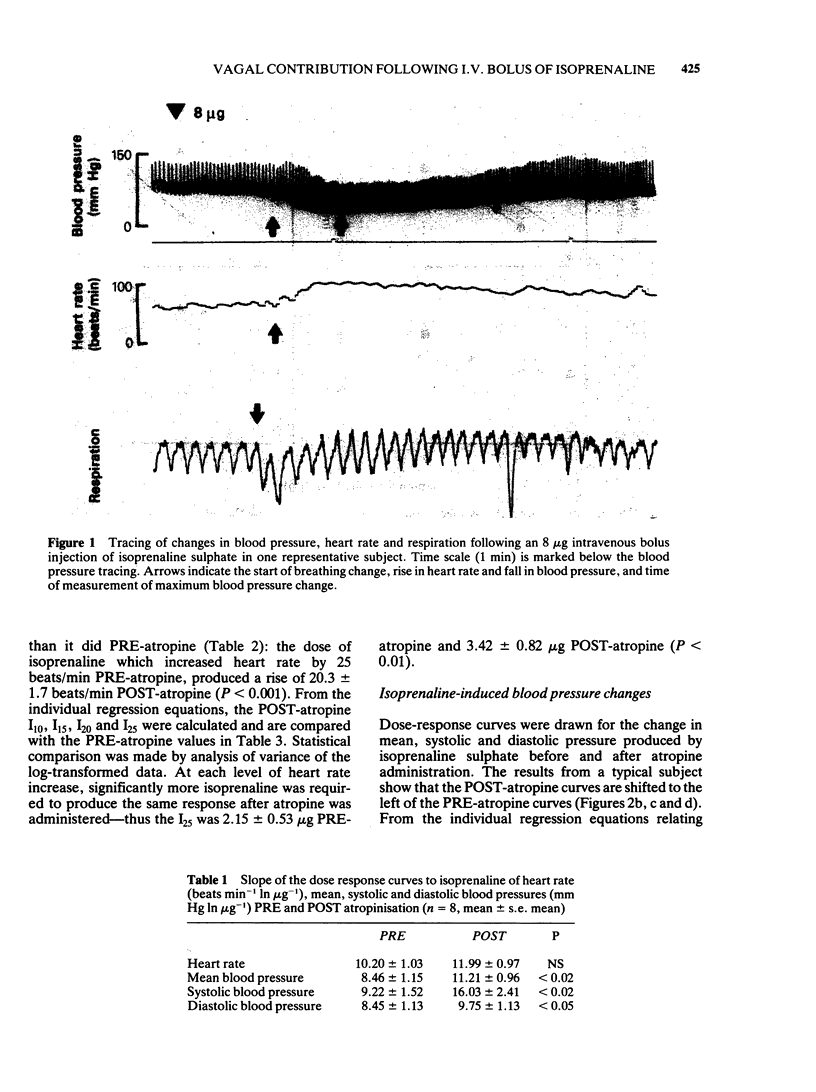
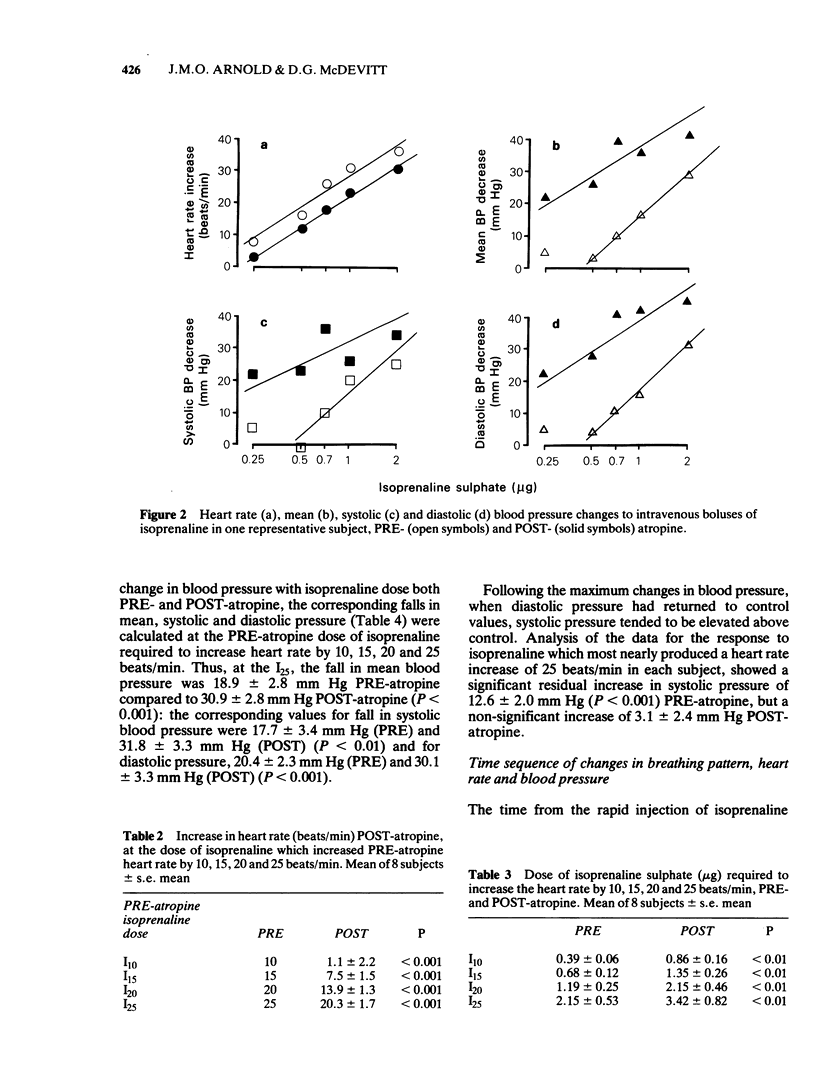
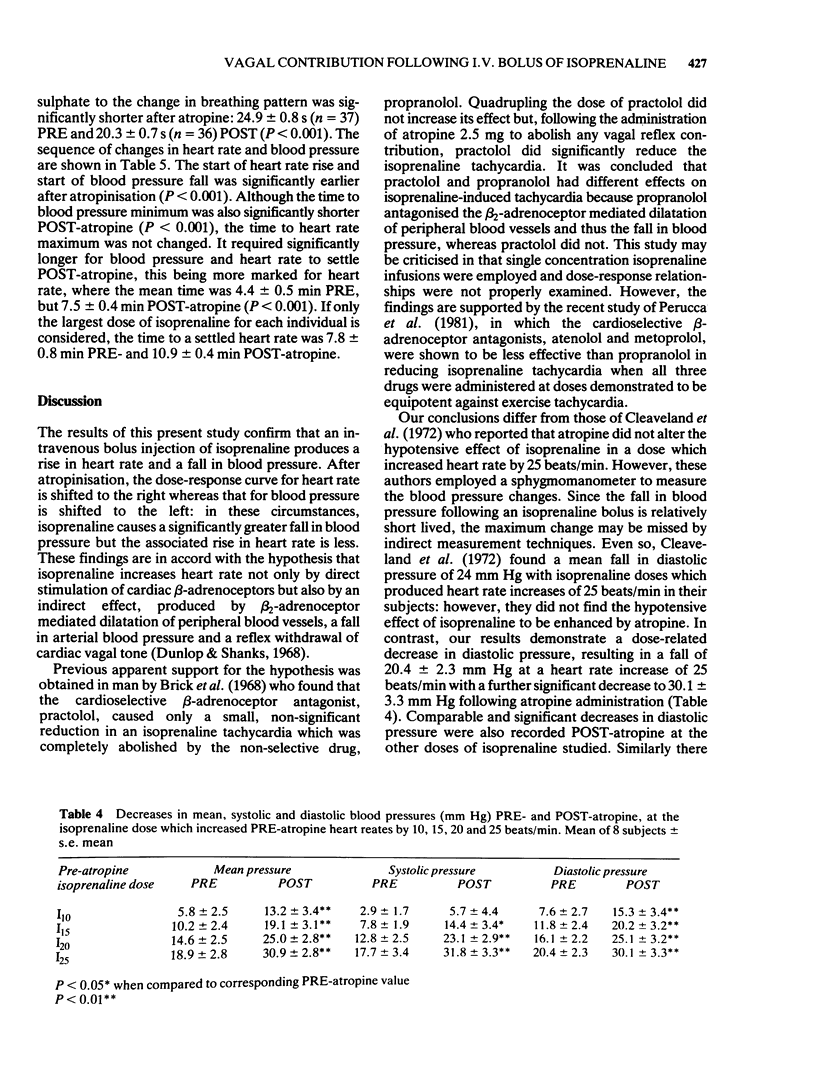
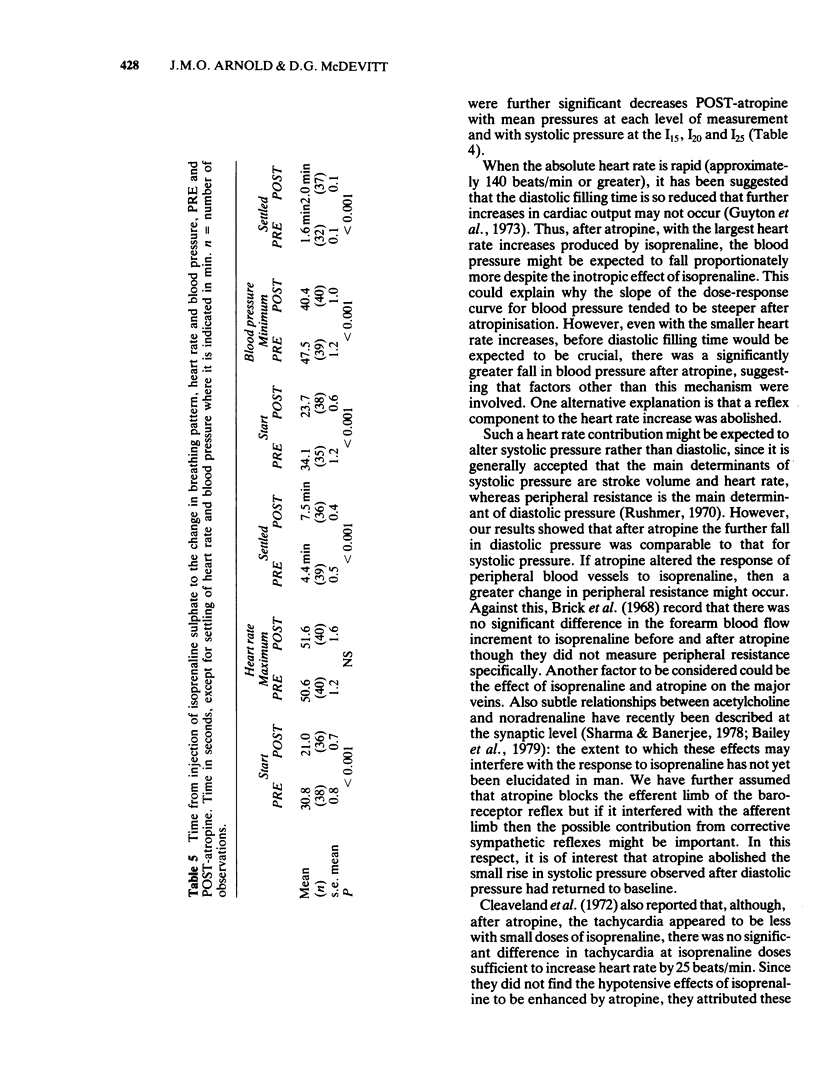
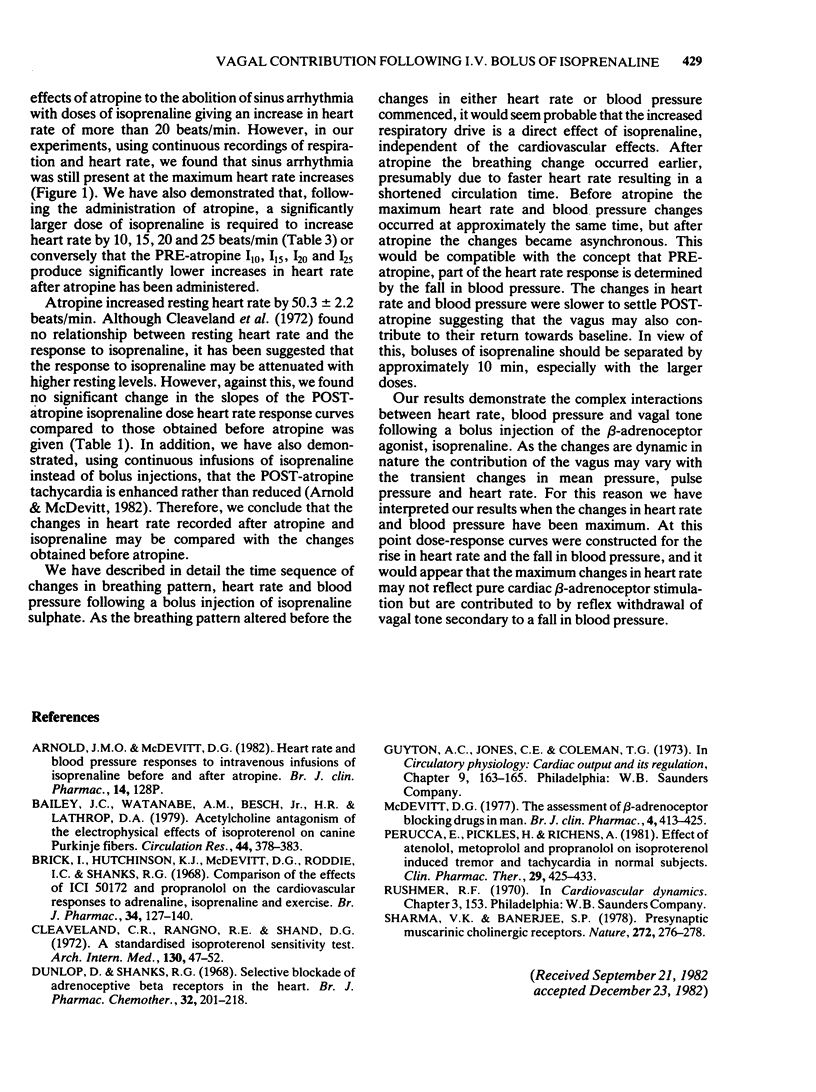
Selected References
These references are in PubMed. This may not be the complete list of references from this article.
- Bailey J. C., Watanabe A. M., Besch H. R., Jr, Lathrop D. A. Acetylcholine antagonism of the electrophysiological effects of isoproterenol on canine cardiac Purkinje fibers. Circ Res. 1979 Mar;44(3):378–383. doi: 10.1161/01.res.44.3.378. [DOI] [PubMed] [Google Scholar]
- Brick I., Hutchison K. J., McDevitt D. G., Roddie I. C., Shanks R. G. Comparison of the effects of I.C.I. 50172 and propranolol on the cardiovascular responses to adrenaline, isoprenaline and exercise. Br J Pharmacol. 1968 Sep;34(1):127–140. doi: 10.1111/j.1476-5381.1968.tb07956.x. [DOI] [PMC free article] [PubMed] [Google Scholar]
- Cleaveland C. R., Rangno R. E., Shand D. G. A standardized isoproterenol sensitivity test. The effects of sinus arrhythmia, atropine, and propranolol. Arch Intern Med. 1972 Jul;130(1):47–52. doi: 10.1001/archinte.130.1.47. [DOI] [PubMed] [Google Scholar]
- Dunlop D., Shanks R. G. Selective blockade of adrenoceptive beta receptors in the heart. Br J Pharmacol Chemother. 1968 Jan;32(1):201–218. doi: 10.1111/j.1476-5381.1968.tb00444.x. [DOI] [PMC free article] [PubMed] [Google Scholar]
- McDevitt D. G. The assessment of beta-adrenoceptor blocking drugs in man. Br J Clin Pharmacol. 1977 Aug;4(4):413–425. doi: 10.1111/j.1365-2125.1977.tb00756.x. [DOI] [PMC free article] [PubMed] [Google Scholar]
- Perucca E., Pickles H., Richens A. Effect of atenolol, metoprolol, and propranolol on isoproterenol-induced tremor and tachycardia in normal subjects. Clin Pharmacol Ther. 1981 Apr;29(4):425–433. doi: 10.1038/clpt.1981.59. [DOI] [PubMed] [Google Scholar]
- Sharma V. K., Banerjee S. P. Presynaptic muscarinic cholinergic receptors. Nature. 1978 Mar 16;272(5650):276–278. doi: 10.1038/272276a0. [DOI] [PubMed] [Google Scholar]


